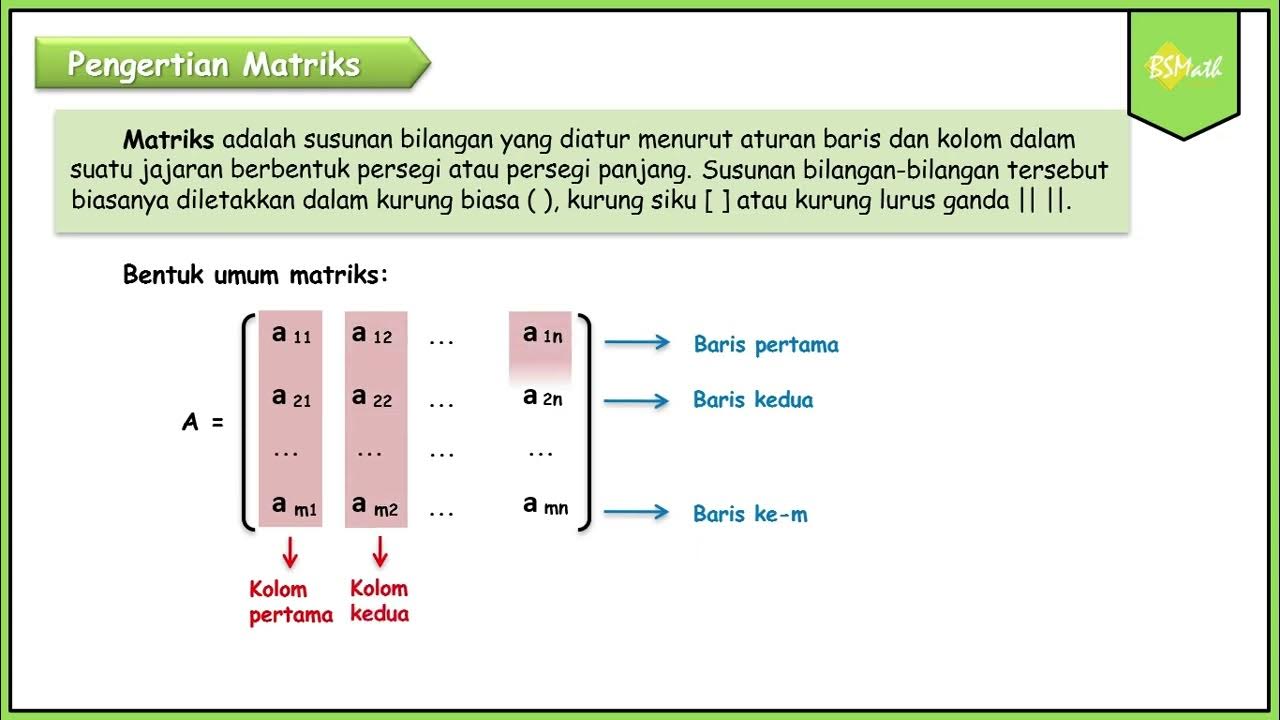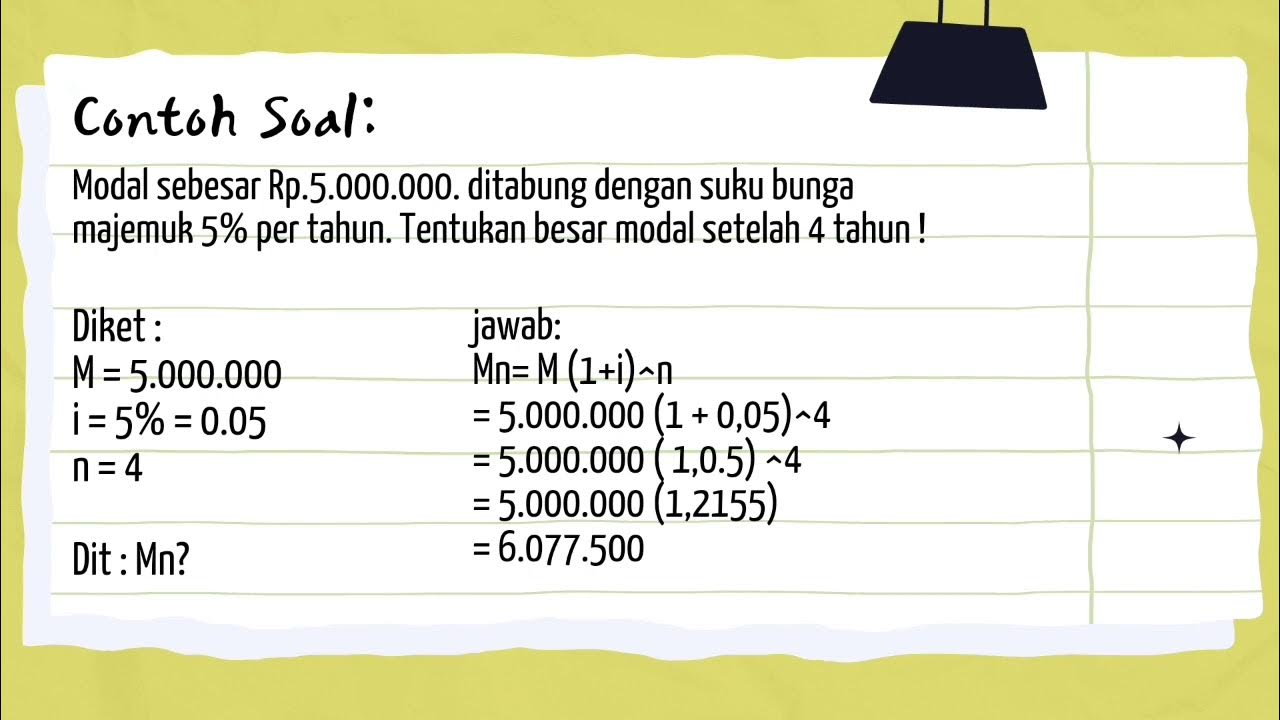Materi Seni Musik Kelas XI : Notasi Musik Barat
Summary
TLDRThis video lesson covers the basics of Western music notation for 11th-grade students. The instructor begins by reviewing elements of Western music like rhythm, melody, and harmony, before focusing on Western notation systems, specifically numeric notation and staff notation. The lesson explains how to read and write these notations, including details about note values, rests, and the use of clefs like G, F, and C. The video also touches on the concept of time signatures and their significance in music composition. The instructor encourages students to ask questions and emphasizes the importance of maintaining health protocols.
Takeaways
- 📚 Introduction to Western Music Notation for 11th-grade students.
- 🎯 Learning objectives: Identify and write Western music notation.
- 🎵 Western music has two main notation types: numeric notation and staff notation.
- 🔢 Numeric notation uses numbers (1-7) to represent notes in a scale, with dots indicating higher or lower octaves.
- 🎼 Staff notation uses symbols resembling 'sprouts' with stems, leaves, and is placed on a five-line staff called 'paranada'.
- 🎶 Explanation of note values: whole notes, half notes, quarter notes, etc., and how they're represented in staff notation.
- 🔑 Introduction to musical clefs: G clef (treble), F clef (bass), and C clef, which determine the pitch of notes on the staff.
- 🕰️ Explanation of time signatures, including common ones like 2/4, 3/4, and 4/4, and how they dictate the rhythm and number of beats per measure.
- 🛑 Importance of rest symbols in music, indicating silent beats within a piece.
- 📢 Students are encouraged to ask questions via WhatsApp or Google Classroom if they need further clarification.
Q & A
What is the main topic of the lesson discussed in the video?
-The main topic of the lesson is Western music notation, specifically focusing on how to identify and write Western music notation.
What are the two types of Western music notation mentioned in the video?
-The two types of Western music notation mentioned are 'not angka' (number notation) and 'not balok' (staff notation).
How is 'not angka' (number notation) structured?
-'Not angka' is structured using numbers from 1 to 7, corresponding to the musical notes Do, Re, Mi, Fa, Sol, La, Si, with variations indicated by dots above or below the numbers.
What is the significance of dots in 'not angka' notation?
-Dots below the numbers indicate lower octaves, while dots above the numbers indicate higher octaves, distinguishing the pitch of the notes.
What elements make up 'not balok' (staff notation)?
-'Not balok' consists of note heads, stems, and flags or beams, with notes placed on a staff of five lines and four spaces to indicate pitch.
How are notes placed on the staff in 'not balok'?
-Notes are placed on the staff lines or spaces, with the position of the note head indicating the pitch. Notes above the third line have stems going down, while notes below the third line have stems going up.
What are the three clefs mentioned, and what do they signify?
-The three clefs mentioned are the G clef (treble clef), F clef (bass clef), and C clef (alto or tenor clef). They indicate the pitch of specific notes on the staff.
What does the G clef indicate on the staff?
-The G clef indicates that the note G is located on the second line of the staff.
What is the purpose of time signatures in Western music notation?
-Time signatures, such as 2/4 or 4/4, indicate the number of beats in each measure (bar) and the note value that receives one beat.
How does the teacher encourage students to stay safe during the pandemic?
-The teacher reminds students to follow health protocols by wearing masks, washing hands, avoiding crowds, and maintaining physical distance to stay safe during the pandemic.
Outlines

Esta sección está disponible solo para usuarios con suscripción. Por favor, mejora tu plan para acceder a esta parte.
Mejorar ahoraMindmap

Esta sección está disponible solo para usuarios con suscripción. Por favor, mejora tu plan para acceder a esta parte.
Mejorar ahoraKeywords

Esta sección está disponible solo para usuarios con suscripción. Por favor, mejora tu plan para acceder a esta parte.
Mejorar ahoraHighlights

Esta sección está disponible solo para usuarios con suscripción. Por favor, mejora tu plan para acceder a esta parte.
Mejorar ahoraTranscripts

Esta sección está disponible solo para usuarios con suscripción. Por favor, mejora tu plan para acceder a esta parte.
Mejorar ahoraVer Más Videos Relacionados

Pengertian Matriks - Matematika Tingkat Lanjut SMA Kelas XI Kurikulum Merdeka

Notasi Faktorial (Peluang)

Pembelajaran Notasi balok Seni Musik Dasar Kelas x SMK

Konsep Musik Barat (Pelajaran Seni Budaya Kelas 11)

Bunga Majemuk || Materi Mtk wajib kelas 11 ( kurikulum merdeka)

Introduction To Accounting | Meaning, Definition And Objectives Of Accounting | Class 11 Accounts |
5.0 / 5 (0 votes)
